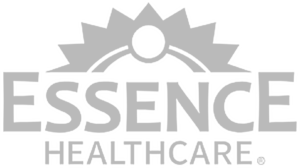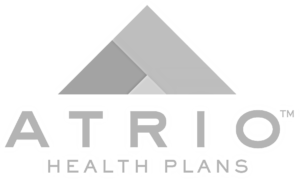How to Choose the Best Digital Marketing Agency?
When it comes to digital marketing, choosing the right agency can make all the difference for your business. With so many options available, it’s important to find an agency that not only understands your industry but also aligns with your goals and values. In this article, we will guide you through the process of selecting the perfect digital marketing agency that suits your business needs and enhances your branding.
With expertise in keyword research, search engine optimization, and content creation, a top-notch digital marketing agency can help drive targeted traffic to your website and boost your online visibility. They can develop and execute a customized strategy that incorporates various channels such as social media, paid advertising, and email marketing to maximize your reach and conversion rates.
In today’s competitive digital landscape, it’s crucial to partner with an agency that stays up-to-date with the latest trends and best practices in the industry. By choosing the right digital marketing agency, you can gain a competitive edge, enhance your branding, and achieve your business objectives effectively.
Ready to find the perfect match for your business? Let’s dive in!
In today’s fast-paced and highly competitive digital landscape, having a strong online presence is crucial for businesses of all sizes. Digital marketing is the key to reaching your target audience, increasing your branding and brand awareness, and driving traffic to your website. However, managing all aspects of digital marketing can be overwhelming, especially if you lack the necessary expertise and resources. This is where a digital marketing agency comes in.
A top-notch digital marketing agency can provide you with the expertise, tools, and resources needed to effectively promote your business online. They have a deep understanding of various digital marketing channels and strategies, and can develop a customized approach that aligns with your business goals. By partnering with the right agency, you can save time and effort, while getting the best possible results for your digital marketing efforts.
Understanding Your Business Needs and Goals
Before you start searching for a digital marketing agency, it’s important to have a clear understanding of your business needs and goals. What are you trying to achieve with your digital marketing efforts? Are you looking to increase website traffic, generate leads, improve brand awareness, or boost online sales? Understanding your objectives will help you narrow down your options and find an agency that specializes in the areas that matter most to your business.
Take the time to analyze your current digital marketing efforts and identify any gaps or areas for improvement. This will give you a better idea of the specific services you need from a digital marketing agency. For example, if you have a well-designed website but struggle with driving traffic, you may need an agency that specializes in search engine optimization (SEO) and content marketing. On the other hand, if you have a strong social media presence but struggle with converting followers into customers, you may need an agency that excels in social media marketing and conversion rate optimization.
Researching and Evaluating Potential Digital Marketing Agencies
Once you have a clear understanding of your business needs and goals, it’s time to start researching and evaluating potential digital marketing agencies. Begin by asking for recommendations from colleagues, industry peers, and business associations. Word-of-mouth referrals can be a great way to find reputable agencies that have a proven track record of delivering results.
In addition to recommendations, conduct your own research online. Look for agencies that have experience working with businesses in your industry or with similar goals. Visit their websites and review their portfolio of work, case studies, and client testimonials. This will give you a sense of their expertise, capabilities, and the results they have achieved for other clients.
During your research, pay attention to the agency’s online presence. Do they have a well-designed and user-friendly website? Are they active on social media? Do they rank well in search engine results? A digital marketing agency that excels in promoting their own brand is more likely to do the same for your business.
Key Factors to Consider when Choosing a Digital Marketing Agency
When evaluating potential digital marketing agencies, there are several key factors to consider. These factors will help you determine if an agency is the right fit for your business:
- Expertise and Services : Assess the agency’s expertise in the specific areas of digital marketing that are important to your business. Do they offer the services you need, such as SEO, content marketing, social media marketing, email marketing, or paid advertising? Look for agencies that have a diverse range of services and a strong track record of success.
- Industry Experience : Consider the agency’s experience working with businesses in your industry. Do they have a deep understanding of your target audience and the unique challenges of your industry? An agency that has worked with similar businesses will be better equipped to create effective strategies that resonate with your audience.
- Team and Resources : Evaluate the agency’s team and resources. Do they have a skilled team of digital marketing professionals with expertise in different areas? Are they up-to-date with the latest trends and best practices in the industry? Look for agencies that invest in ongoing training and professional development for their team.
- Communication and Reporting : Communication is key when working with a digital marketing agency. Consider how the agency communicates with clients and how often they provide updates and reports on the progress of your campaigns. Look for agencies that have clear communication channels and provide regular reports that are easy to understand.
- Budget and Pricing : Consider your budget and the pricing structure of the agency. While it’s important to find an agency that fits within your budget, remember that quality and expertise come at a price. Look for agencies that offer transparent pricing and provide value for your investment.
The Different Types of Digital Marketing Services Offered by Agencies
Digital marketing agencies offer a wide range of services to help businesses achieve their online marketing goals. Understanding the different types of services offered can help you determine which agency is the best fit for your business.
- Search Engine Optimization (SEO) : SEO is the process of optimizing your website to rank higher in search engine results pages. A good SEO strategy can help increase organic traffic to your website and improve your online visibility.
- Content Marketing : Content marketing involves creating and distributing valuable and relevant content to attract and engage your target audience. This can include blog posts, articles, videos, infographics, and more.
- Social Media Marketing : Social media marketing involves using social media platforms such as Facebook, Instagram, Twitter, and LinkedIn to promote your business and engage with your audience. It can help increase brand awareness, drive website traffic, and generate leads.
- Email Marketing : Email marketing involves sending targeted emails to your audience to promote your products or services, build relationships, and drive conversions. It can be an effective way to nurture leads and keep your audience engaged.
- Paid Advertising : Paid advertising involves running ads on platforms such as Google Ads, Facebook Ads, and LinkedIn Ads to reach your target audience and drive traffic to your website. It can be a quick way to increase visibility and generate leads.
- Conversion Rate Optimization (CRO) : CRO involves optimizing your website and marketing campaigns to maximize conversions. This can include A/B testing, improving website usability, and optimizing landing pages.
Case Studies and Client Testimonials
When evaluating potential digital marketing agencies, it’s important to review their case studies and client testimonials. Case studies provide real-world examples of the agency’s work and the results they have achieved for their clients. Look for case studies that are relevant to your industry or goals.
Client testimonials can also provide valuable insights into the agency’s expertise, professionalism, and client satisfaction. Reach out to the agency and request references or ask for testimonials from their previous or current clients. This will give you a better idea of what it’s like to work with the agency and the results you can expect.
Pricing and Budget Considerations
Pricing is an important factor to consider when choosing a digital marketing agency. While it’s important to find an agency that fits within your budget, remember that quality and expertise come at a price. It’s better to invest in a reputable agency that can deliver results than to settle for a cheaper option that may not provide the same level of service.
When discussing pricing with potential agencies, ask for a breakdown of their fees and services included. Some agencies may charge a monthly retainer fee, while others may offer pricing based on specific projects or campaigns. Make sure you have a clear understanding of what is included in the pricing and if there are any additional costs or hidden fees.
Communication and Reporting Expectations
Effective communication is crucial when working with a digital marketing agency. Make sure you have a clear understanding of how the agency communicates with clients and how often they provide updates and reports on the progress of your campaigns. Look for agencies that have clear communication channels and provide regular reports that are easy to understand.
During your initial conversations with potential agencies, ask about their preferred communication methods (email, phone, in-person meetings) and how often you can expect to receive updates on your campaigns. This will help set the right expectations and ensure that you are on the same page with the agency.
The Importance of a Long-Term Partnership
When choosing a digital marketing agency, it’s important to consider the long-term partnership. Digital marketing is an ongoing process that requires continuous monitoring, optimization, and adaptation. A long-term partnership with an agency that understands your business and goals can lead to better results and a more efficient use of resources.
Look for an agency that is committed to your success and is willing to invest the time and effort to understand your business and industry. A good agency will take the time to learn about your target audience, competitors, and industry trends to create effective strategies that deliver results.
Making an Informed Decision
Choosing the right digital marketing agency is a critical decision that can greatly impact the success of your business. By understanding your business needs and goals, researching and evaluating potential agencies, considering key factors, and reviewing case studies and client testimonials, you can make an informed decision that aligns with your business objectives.
Remember to consider the agency’s expertise, industry experience, team and resources, communication and reporting practices, pricing and budget considerations, and the importance of a long-term partnership. By taking the time to find the perfect match for your business, you can set yourself up for digital marketing success and achieve your online marketing goals effectively.
FAQ: Choosing the Right Digital Marketing Agency
Selecting the right digital marketing agency can significantly impact your business’s success.
What should I look for in a digital marketing agency?
Look for an agency with a proven track record, industry expertise, and a comprehensive range of services tailored to your needs.
How do I evaluate a digital marketing agency’s experience?
Evaluate their portfolio, case studies, client testimonials, and ask for specific examples of past successes in your industry.
Why is industry expertise important in a digital marketing agency?
Industry expertise ensures the agency understands your market, audience, and the unique challenges your business faces.
How important are client testimonials and reviews?
Client testimonials and reviews provide insights into the agency’s reliability, effectiveness, and client satisfaction.
What services should a comprehensive digital marketing agency offer?
A comprehensive agency should offer SEO, content marketing, social media management, PPC, email marketing, and analytics.
How do I determine if an agency’s pricing is fair?
Compare their pricing with industry standards, consider the scope of services offered, and evaluate the potential ROI.
Can a digital marketing agency help with both strategy and execution?
Yes, a good agency should provide strategic planning and execute campaigns to achieve your marketing goals.
How do I measure the success of a digital marketing agency’s efforts?
Success can be measured through key performance indicators (KPIs) such as increased traffic, lead generation, conversion rates, and ROI.
























